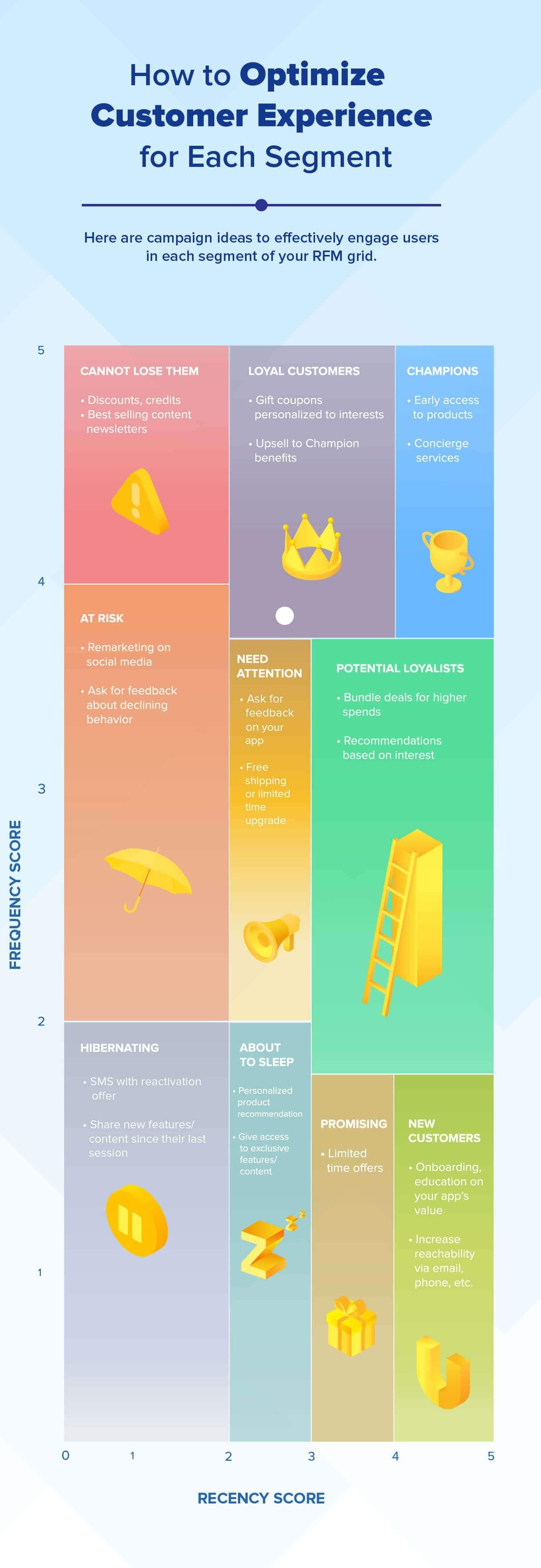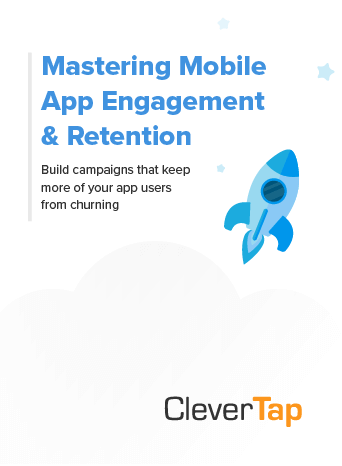We’ve been covering various aspects of the customer experience for a while now on this blog. Check out previous posts on using psychology to build an optimal experience, why customer lifecycle marketing needs to shift to experiences, and the process and techniques for continuous app improvement.
Experiences are an important aspect in building your app precisely because your brand rises and falls on the quality of the experiences you provide users. How they perceive your app and your services matters. And if you don’t provide an experience that puts their needs up front, you risk losing the very people who can bring you success.
But what tools will make your customer experience management efforts more effective?
What is Customer Experience?
If we are to improve customer experience we need to define it.
A customer experience is, initially, a user’s interaction with your brand. Everything from downloading and onboarding to making a purchase or contacting support. But it’s also the resulting perception of your brand based on those interactions.
An experience can therefore be positive if users are delighted by your app, your marketing, and any customer service experience they have with your team. But they can be negative if you are sending push notifications too frequently, or if they encounter support personnel who are not helpful.
A customer experience strategy then is your plan for improving all aspects of the user experience using the tools that can best improve these interactions.
What Tools Do You Need for Experience Optimization?
If you intend to optimize experiences, then you will need a combination of tools that allow for real-time analytics, segmentation by customer lifecycle stages, and user engagement on multiple channels.
Here’s what your tech stack needs to look like:
Customer Data Platform
To improve customer experience, you have to know who your users are in order to serve them what they want.
A prime example is messaging. If you’re still sending one-size-fits-all messaging and hoping for conversions, give up. Those emails are going to the Spam folder and those push notifications are being swiped away as quickly as they’re received.
This is where a customer data platform (CDP) can help you by compiling rich profiles on every user and their activity in your app.
Our CDP brings in data from all the various – and often unconnected– data sources that your organization uses, both offline and online. It utilizes native Big Data and AI/ML technologies to run machine learning models such as clustering and lookalikes on millions of user profiles in real time.
End result: you can store and query millions of profiles in real time to proactively send a deal to the user looking for it and not waste your marketing budget on a user who is not interested.
Automated Segmentation
Customer experience management is as much about continuous improvement of the product as it is about serving up the right content to the right users at the right time. It’s the reason we turn to user segments as stand-ins for when we’re dealing with large numbers of users.
So imagine if you have to manually create segments for a database of 10 million users. You’ll probably quit before completing the task. Automation to the rescue!
Our automated segmentation tool can uncover common behaviors from billions of data points to identify your most valuable customer segments.
Machine learning can then connect the dots between users’ purchase history, app activity, and browsing behavior to tell you which segments need more persuading, and which are probably going to buy anyway. Less marketing resources wasted.
This is done based on your users’ health scores. The AI groups users based on RFM analysis and the output customer scores – i.e., how recently they last used the app, how frequently they typically launch your app, and the monetary value of their typical transaction with you. This results in immediately actionable segments, for example:
- See your loyalists and reward them (or ask them to refer friends)
- See your hibernating or at-risk users and initiate win-back campaigns for them
- See those most likely to convert and keep them out of your campaigns since they’ll likely buy anyway
Meanwhile our behavioral segmentation tool can track user interactions in real-time and build user profiles dynamically (with nearly 250 profile attributes). This means you have actionable insight on your users – information that provides context for your marketing messaging and omnichannel campaigns.
Omnichannel Campaign Orchestration
The third thing you will need to pull off your customer experience strategy is a way to effectively manage campaigns that are going out to all those segments on all your channels.
Most traditional marketing automation tools are simply scheduled campaigns or else triggered or recurring actions – sequences that have no insight into the user’s lifecycle stage or cannot execute omnichannel marketing campaigns on all the channels you use.
Our platform helps you avoid this simplistic understanding of automation and instead gives your users individualized experiences over all your digital touchpoints. These experiences draw information from the historical behavior and profile data of each user, are fed into a recommendation engine that sends out messaging and offers that match user preferences and intents. Users get the royal treatment from your app, and you increase retention and revenue for your brand.
Measurement & Tracking
Finally, in order to continually improve on experiences, you will need a way to collect, analyze, process, and act on the customer insights from your campaigns.
The idea here is to:
- Collect and analyze the data from your Customer Data Platform to look for opportunities
- Build out omnichannel campaigns across messaging channels
- Track the results of your campaigns
- Optimize campaigns based on the results
With all these tools in place, it becomes easier to build engagement strategies that drive conversions and increase CLTV.
Experience Optimization Use Cases
How can you use our platform to better market to your users? Below we’ve put together a graphic outlining some of the more common lifecycle stages that users go through, and how you can engage them more effectively using our technology.
Customer Experience: Final Thoughts
We empower brands to optimize the customer experience by leveraging their user data alongside our marketing automation, AI/ML, and personalized engagement tools. The result is effective engagement across the entire customer lifecycle.
For a deeper dive into the ins and outs of user experience and the psychology behind experience optimization, read more:
User Experience Design
- User Experience: UX Design Principles That Deliver Awesome Apps
- 6 Mobile App Design Tips for a World-class User Experience
- User Journey Mapping to Improve UX
Psychology Behind the Customer Experience
- The Hidden Psychology of Successful Mobile Apps (Infographic)
- Why Users Uninstall Apps: 28% of People Feel Spammed [Survey]
- Customer Experience Optimization: Using Psychology to Improve Your UX

Mastering Mobile App Engagement & Retention
Shivkumar M 
Head Product Launches, Adoption, & Evangelism.Expert in cross channel marketing strategies & platforms.
Free Customer Engagement Guides
Join our newsletter for actionable tips and proven strategies to grow your business and engage your customers.















































